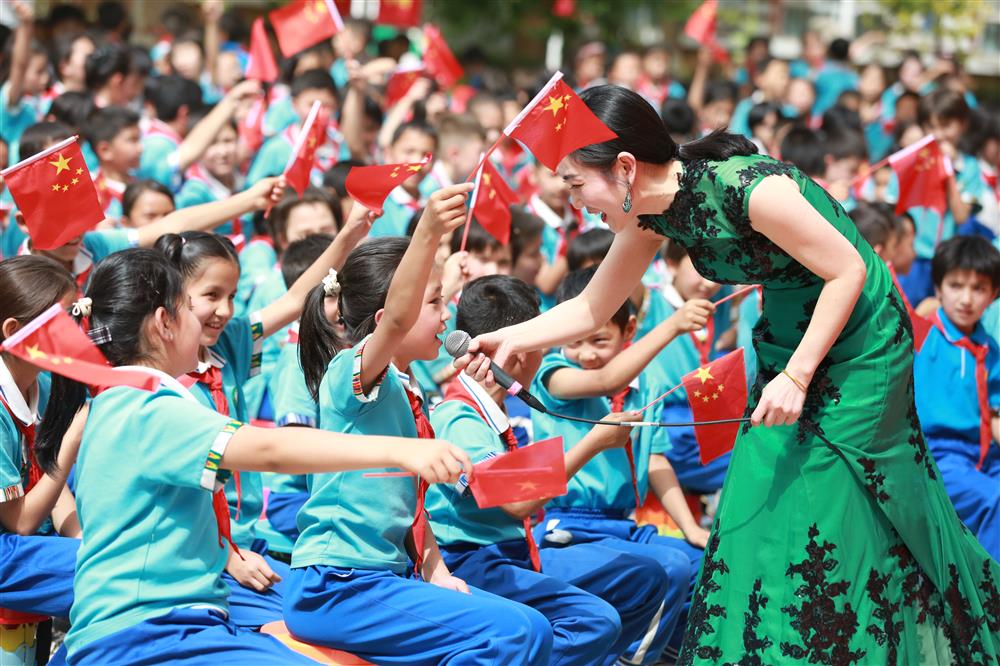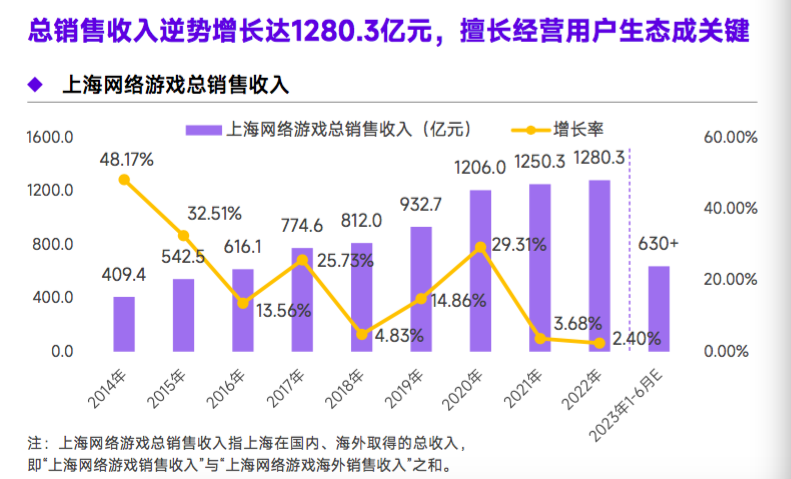【Sea Memories】Hearing the Sound of Shanghai in the Waves
The Hangzhou-Jiaxing-Huzhou Plain is a typical alluvial plain. The continuous sea invasion makes it difficult to confirm the time when this area was formed into land. Experts believe that the latest time of land formation should be 8,000 years ago. The excavation of the Jiaxing Majiabang cultural site proves this time point. This rice farming cultural relic is 7,200 years old, and rice grains were unearthed in the site.
The time when the Nine Peaks and Twelve Mountains in Songjiang, Shanghai and the line connecting them formed land should be consistent with the Hangzhou-Jiaxing-Huzhou Plain. The Gangshen Line formed later is a tangible mark of the formation of Shanghai 6,500 years ago.
This winding coastline forms a section of the west coast of the Pacific Ocean. The southern section of the Gangshen Line was also the coastline of the Hangzhou-Jiaxing-Huzhou Plain at that time. This coastline runs from Waigang Town in Jiading District to Shaji Village in Jinshan District, and the distance between these two points is about 80 kilometers. The central areas of Songjiang and Qingpu are only a few kilometers away from the Gangshen Line. Historical records show that during the 3,000 years of the existence of the Gangshen Line, the speed of silt accumulation in front of it was slow. The expansion and formation of Shanghai's territory was slowly formed by the combined forces of nature over thousands of years.
The form of Gangshen Line is a tidal flat. The ancients did not have the ability to build dams to block water. During the tides, the tidal flats were repeatedly covered by sea water, and it was normal for large areas of land to be flooded during storm tides. However, the land along the coast did not become salinized and did not lose its function of planting. This is rare in a completely natural state. The reason is that there are many river estuaries distributed on the land of Songjiang and Qingpu. The landform features of Hangzhou-Jiaxing-Huzhou Plain and Taihu Lake Basin are high in the west and low in the east. Therefore, a large amount of fresh water from these two regions continuously flows through the land of Songjiang and Qingpu to the East China Sea regardless of dry and rainy seasons, preventing the backflow of seawater from the East China Sea and diluting the salt in the seawater along the coast.
Majiabang is only a few dozen kilometers away from Songjiang and Qingpu. The earliest ancestors of Songjiang and Qingpu should have come from the Hangzhou-Jiaxing-Huzhou Plain or the Hemudu cultural circle on the south bank of Hangzhou Bay. It can be imagined that they came here with rice seeds and followed the fragrance of the soil. Songjiang and Qingpu on the line of Jiufeng Twelve Mountains are lands deposited with silt from the upper reaches of the Yangtze River, which are most suitable for growing rice. The Shanghai Songze Culture and Shanghai Guangfulin Culture, which were formed later, were the earliest cultural sites formed 6,000 years ago. They are also the remains of rice farming, similar to the Majiabang culture. Songjiang, as the root of Shanghai and the source of culture, has not been interrupted for 6,000 years in terms of the state of cultural inheritance and development. This also proves that the output of rice in this area is continuous.
In ancient times, Songjiang and Qingpu were not very important economically and militarily because of their small area and proximity to the sea. During the Wu-Yue War, the fighting spread to Kunshan, but nearby Qingpu remained unscathed.
Songjiang has always been under the jurisdiction of Suzhou. In the 14th year of the Yuan Dynasty, Huating County was upgraded to Huating Prefecture, and one year later it was renamed Songjiang Prefecture. During this period, the geographical scope of Shanghai had taken shape and the economy was unprecedentedly prosperous.
According to historical records, during the Hongzhi reign of the Ming Dynasty, the total annual rice production in Songjiang and Qingpu reached 4.3 million dan. This land and the rice produced on it have nurtured generations of Shanghai people, and the grain produced was transported to the far north through the Beijing-Hangzhou Grand Canal.
Huang Xie was granted the fiefdom in 248 BC. Before this time, the Huangpu River had already been formed.
The Huangpu River was "forced" out: after the Fengxian-Nanhui-Chuansha line gradually became land, the water that originally flowed down from the Taihu Lake Basin to the East China Sea was blocked. The power of nature is huge. This stream of water rushed left and right, made several turns, merged into the Juzaobang, and then entered the Yangtze River along the outlet of the Juzaobang.
At this moment, the left bank of the Huangpu River was no longer affected by the salt tide of the East China Sea, and the land became more suitable for planting, becoming a truly prosperous place. After the new coastline was formed far away on the East China Sea, the land existed in the form of tidal flats for more than a thousand years. People found that these tidal flats were a good place to make salt, so they could turn the disadvantages in the regional environment into advantages.
There are two traditional salt-making processes in China: sun drying and boiling. The sun drying method, also known as beach drying, is to use the beach to open salt fields, introduce seawater into the salt fields, and turn it into salt after sun drying, evaporation, and crystallization. This method is greatly affected by the weather, especially in Shanghai in winter, when low temperatures and rainy days account for a high proportion, affecting salt production. Therefore, the boiling method is widely used here, which is boiling in a large iron pot.
The boiling method "consumes a lot of firewood." Coincidentally, there are endless reeds on the beach, which are just right for boiling salt. The reeds wither in winter, which is the slack season for farming. Farmers from as far away as Yancheng, Rugao, and Yangzhou, as close as Baoshan and Chongming, come to this beach to cut reeds to earn income during the slack season. It is said that the income from harvesting reeds in Chuansha and Nanhui in one winter can buy ten shi of rice.
The water in the East China Sea is inexhaustible. From a certain perspective, the output of salt is equal to the stock of reeds.
During the Qiandao and Chunxi years of the Song Dynasty, the salt production in Huating was equivalent to 960 tons; after the first year of the Zhengtong period of the Ming Dynasty, the salt production in this area of Shanghai reached 8,450 tons. Scholars wrote in "A Brief Account of the Development of the Salt Industry since the Establishment of Chuansha": "Chuansha is a coastal area with red brine all over the land and abundant benefits of Bobo, making it a famous salt-producing area. Since the Song and Yuan Dynasties, salt fields have been set up, salt officials have been appointed, and stove people have been organized. Salt production once became the industry of the ancestors of Chuansha and occupied an important position in the early local economy."
"The history of Pudong is half the history of salt production." Salt production is the earliest manufacturing industry in Shanghai. The wonder behind this is that reeds are freshwater plants. Generally speaking, high-salinity seawater is not suitable for the growth of reeds. However, in Shanghai, on the nearly 1,000 square kilometers of shallows in Chuansha Nanhui on the East China Sea, reeds are growing vigorously.
Shanghai Lingang Binhai Marine Ecological Protection and Restoration Project. On March 15, 2023, construction machinery was working at the marine ecological protection and restoration project site. Photo from this newspaper
During the Jiaqing period of the Qing Dynasty, "fresh water gradually moved southward" - water from the upper reaches of the Yangtze River entered Chuansha and Nanhui through the Chuansha River, diluting the salt content of the seawater on the shallows, and the salt production industry in Chuansha and Nanhui came to an end.
The scientific explanation is that after the Quaternary glaciers entered their final period, the temperature in China continued to rise, the ice and snow on the Qinghai-Tibet Plateau melted, and the water flow from the upper reaches of the Yangtze River increased. The potential energy of the Pacific Ocean circulation weakened, causing the fresh water from the Yangtze River to be trapped on the East China Sea, diluting the salt content in the seawater.
Generally speaking, the treatment of land salinization is a process that takes decades. The most typical example is Qidong City, which is very close to Shanghai. It was formed at a similar time as Chuansha and Nanhui. In order to degrade the salt in the soil, water from the Yangtze River was diverted into the river on the land. After decades, rice is still not grown on the land in Qidong.
Miraculous changes have taken place on the salinized shallows in Chuansha and Nanhui areas: water from the Yangtze River and Huangpu River was introduced into them through the river channels, and the salt on the land was rapidly degraded. In just over a decade, the land's planting function was basically restored.
According to historical records, in the 15th year of the reign of Emperor Jiaqing of the Qing Dynasty, Chuansha was "populated by people from all over the country, with many surnames and a dense population". Since then, the population of Chuansha has remained at around 100,000, proving that the population of Chuansha has not decreased on a large scale due to the end of the salt industry.
Today, sluice gates have been built at several river mouths on the Pudong embankment to prevent the entry of saltwater tides. Looking around, in areas outside Pudong, Shanghai, there is very little high-yield agriculture and few modern industrial buildings on salinized land, because salt is both a corrosive agent for metals and a moisture absorbent on the surface of buildings.
Around the turn of the century, Chuansha and Nanhui were incorporated into the administrative division of Pudong. The clean and fertile land of Chuansha and Nanhui after desalination greatly contributed to the large-scale development of Pudong.
On the alluvial plain by the ocean, the land is not salinized, and perhaps only in Shanghai and Pudong, Shanghai.





